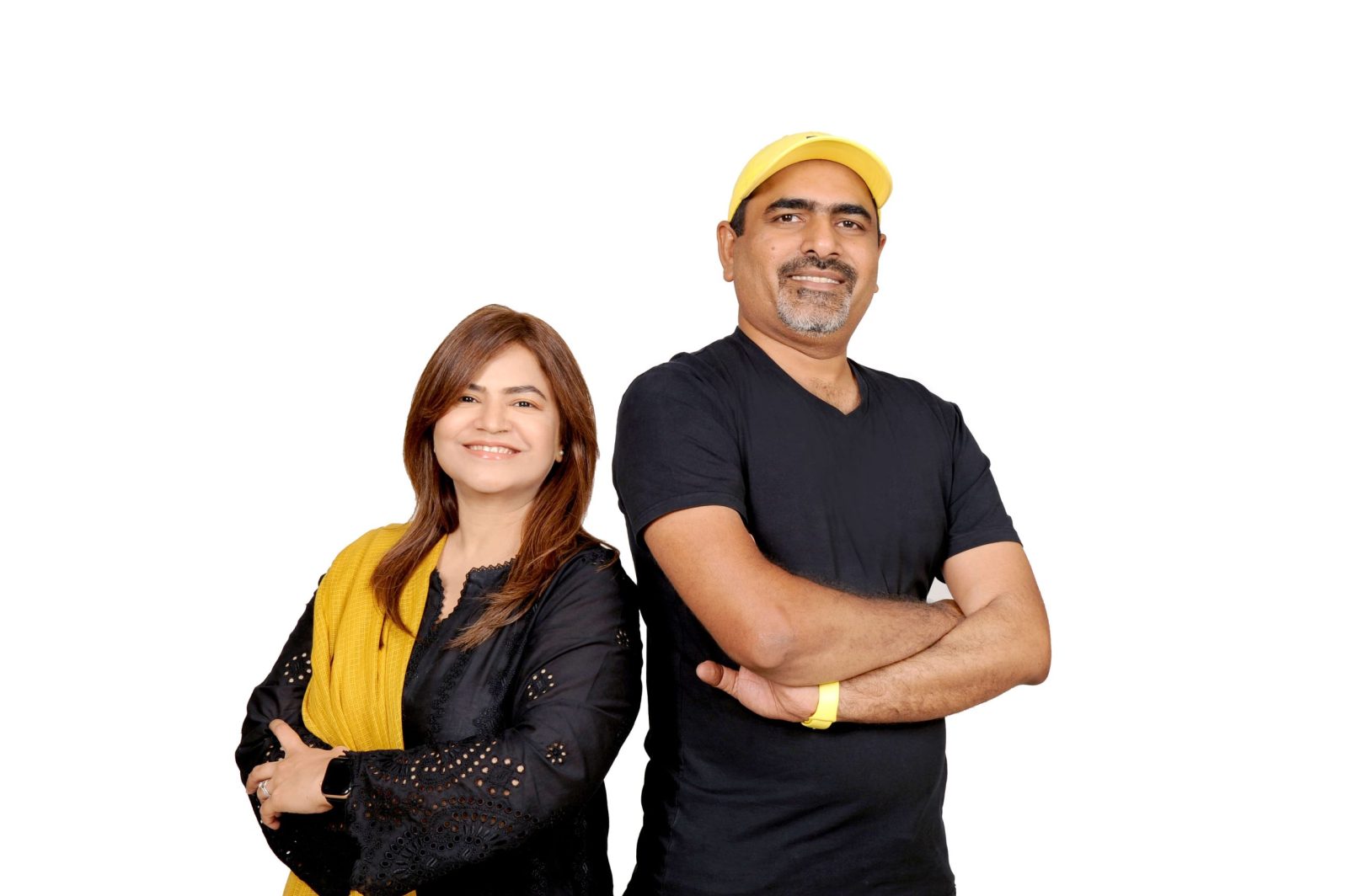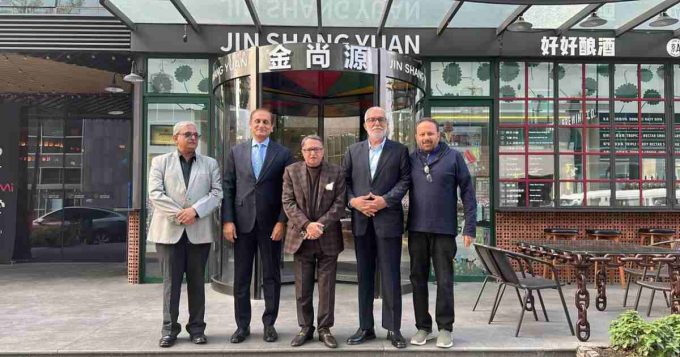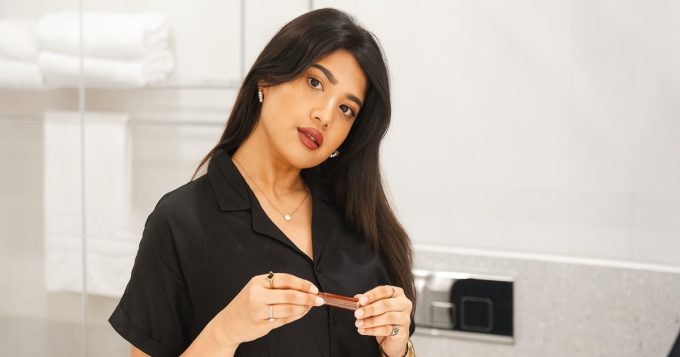
Synergyzer: What inspired you to start Food Fusion on YouTube, and how did you come up with the concept of fusion cuisine? Kindly share your brand-building journey, from the first video to reaching millions of subscribers.
Food Fusion: The decision to start Food Fusion was influenced by YouTube. In October 2012, YouTube was banned in Pakistan, but the ban was lifted in October 2015. I was working at Creative Chaos, a leading digital agency in Pakistan, and we realised how the ban was detrimental as YouTube was an excellent learning platform. With the ban lifted, I resigned and started Food Fusion, initially intending to sell cakes.
However, I realised I needed a brand that people would seek out, rather than me having to sell my products directly. My wife, Saima, and I leveraged our skills to create Food Fusion. I learned to use a professional camera and lighting through YouTube tutorials, while Saima attended editing classes. We converted our drawing room into a shooting studio and began creating cooking videos. The concept of fusion cuisine was inspired by Coke Studio’s fusion music concept, which blended different music genres. We aimed to make cooking fun again by experimenting with recipes, mixing traditional dishes with new ideas.
From day one, we focused on creating short, fast-paced videos that communicated complex recipes without wasting viewers’ time. This approach quickly resonated with our audience. We listened to their requests, creating recipes in our unique style. Saima and I worked tirelessly, often shooting videos late into the night after putting our children to bed. Initially, I worked part-time, but eventually, I transitioned to full-time, and our efforts paid off. Within a year, we had 90,000 YouTube subscribers and a strong following on Facebook and Instagram.
Our strategy included releasing videos simultaneously on all three platforms, ensuring maximum reach. This approach helped us build a loyal audience who trusted our recipes. We also focused on branded searches, training our audience to search specifically for Food Fusion recipes. This stealth marketing ensured high traffic and kept Food Fusion relevant amidst a growing number of food content creators. Brand building was crucial from the start. We realised that without a brand, selling products would be challenging. We wanted people to seek out our products rather than us having to push them. Therefore, we focused on building a strong brand identity, choosing “Food Fusion” as our name instead of something personal. This clarity helped us establish a brand that people recognised and trusted. We were committed to listening to our audience and responding to their requests. Saima and I spent countless hours answering messages and engaging with our community, often sacrificing sleep. Our dedication paid off as our community started to engage with each other, creating a snowball effect that further strengthened our brand. Every recipe we published was meticulously tested for taste and ease of preparation. We prioritised quality over quantity, even if it meant not releasing some videos. This uncompromising approach ensured that our audience could trust our recipes to deliver great results. This commitment to quality and engagement helped us build a strong, trusted brand in the competitive world of online cooking content.

Synergyzer: What is the demographic breakdown of your viewership? Which age group and gender follows you the most, and how do you tailor your content and promotions to their preferences? Do you focus on family-friendly recipes, cooking challenges for younger audiences, or health-conscious recipes for older viewers?
Food Fusion: Our viewership demographic is 65% female and 35% male, with 70% of our traffic coming from Pakistan and the remaining from India, the UK, US, and other diaspora communities. Our largest age group is 25–34-year-olds, which includes newly married women and new moms who are looking for cooking guidance. We tailor our content to their preferences by creating everyday cooking recipes, seasonal content, and following international trends. We also have a channel for kids and a healthy fusion channel for health-conscious viewers. And yes, our recipes are family-friendly, with serving sizes ranging from 4-6 people. Most of these people understand English and can read it. While they may not be fluent, they can read all the ingredients.
For those who don’t know English, we’ve written the ingredients in Roman Urdu, allowing them to follow the recipe. We prioritise responding to our audience’s requests and have a fast turnaround time to keep up with the latest food trends and seasonal ingredients.
Synergyzer: How do you choose which international recipes to include, and how has your audience responded? Do desi recipes get more engagement, or are international recipes equally popular? How do data and feedback influence your content choices?
Food Fusion: We choose international recipes based on audience requests and viewership trends. Recently, Korean, Turkish, and Middle Eastern recipes have been popular, and we experiment with modifying them to suit local taste palettes. While desi recipes are still the most popular, our fusion recipes that combine international dishes with desi elements are also well-received. Data and feedback play a huge role in our content choices, and we rely on audience requests and viewership trends to decide what recipes to create next. We aren’t shy to experiment and try new things, and our fusion approach gives us the freedom to create unique content.
Synergyzer: What’s the secret to creating engaging, short videos for complex recipes? How do you balance concise instructions, appealing visuals, and catchy background music? What unique features or storytelling techniques make your videos stand out and captivate your audience?
Food Fusion: Creating engaging short recipe videos relies on clear instructions, avoiding unnecessary steps, and assuming nothing. We show specific techniques, such as peeling or cutting, to keep the videos concise and focused on the food. Balancing concise instructions with appealing visuals and catchy music is crucial. While visuals and music enhance the experience, clear and complete instructions are essential. We simplify steps to organise the process, ensuring viewers can easily follow along. For instance, a complex recipe like biryani is presented in just 2-3 minutes, yielding great results.
Our signature music track, chosen by coincidence, has been consistent for eight years because our audience loves it and dislikes changes. We rarely speak in our videos, but when we do, it’s to explain specific topics like appliance guides or cooking techniques, responding to audience demand for detailed explanations. Our storytelling is evident in our execution speed. From concept to release, we once completed a video in under four hours, a record we’re proud of. During COVID, we adapted by moving our studio back home, maintaining content production despite challenges. Our team worked remotely, with a streamlined system for shooting, editing, and coordinating. This adaptability ensured we continued to meet audience needs promptly. Our success lies in clear instructions, quick responses to trends, and consistent engagement with our audience.
Synergyzer: What promotional strategies have driven Food Fusion’s success, and how do you leverage social media to reach a wider audience? Have specific collaborations, influencer partnerships, or brand ambassadorships significantly contributed to your growth?
Food Fusion: We haven’t spent much on advertising and marketing, and our growth on YouTube has been completely organic. We’ve only occasionally spent on Facebook and Instagram ads when our content wasn’t getting traction due to political issues or other trending topics. Collaborations with influencers and celebrities have helped us reach a wider audience, but we prioritise organic growth and engagement. We believe that a genuine fan base is more valuable than a large, paid-for following. Recently, we’ve started appearing in front of the camera more to build our personal brand and promote our products, as we recognise the importance of having a familiar face associated with Food Fusion.

Synergyzer: Pakistani food has traditionally been associated with desi cuisine. How do you see the changing trends towards Oriental, Chinese, and Korean food affecting the local food scene?
Food Fusion: Pakistani food is often seen as desi cuisine and confused with Indian cuisine. While there are similarities, a fine line differentiates them. We’ve highlighted this distinction online. There has been significant influence from Chinese, Oriental, and Korean cuisines, especially among the younger crowd. We incorporate these influences into a desi palette, creating fusion dishes that appeal to a broader audience. This approach modernises food, making cooking fun again. Traditional dishes like Salan, Keema, and Nihari are staples, but there are endless variations. In cooking, there are no strict rules, except that everything must be halal, ingredients should be easily available, and the food must taste good. Listening to our audience is crucial, and this has proven successful for us as creators.
Synergyzer: Besides Food Fusion, what other projects are you involved in? How do you manage your time and creative energy across multiple ventures, and what can we expect from your upcoming projects?
Food Fusion: Besides Food Fusion, which remains our main focus, we are exploring exciting new ventures. One is e-commerce, leveraging our brand to benefit our audience. We aim to promote “Made in Pakistan” products, reflecting our identity as a proudly Pakistani brand creating international quality content. Despite some thinking we’re based in India, Dubai, or the US, we proudly operate from Karachi. We’ve launched a new channel, Fusion Crafts, dedicated to DIY projects—another passion of mine.
Balancing this with Food Fusion is challenging, but we’re expanding our team to help. We’ve also launched aluminium foil and cling film products, ensuring high quality, greater quantity, and affordability. The launch has received positive feedback, and we plan to expand further. To strengthen our brand, Saima and I have started appearing on camera more, despite being camera-shy. This has helped us connect better with our audience, who now recognise us more often in public. This effort supports our goal of making our country proud, creating more jobs, and exploring export opportunities.










